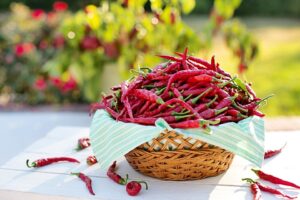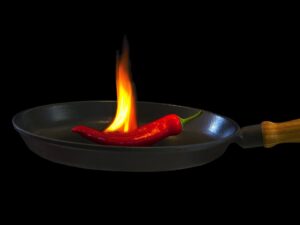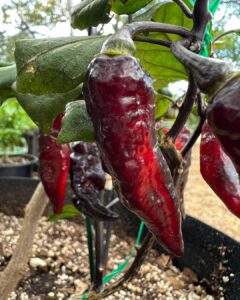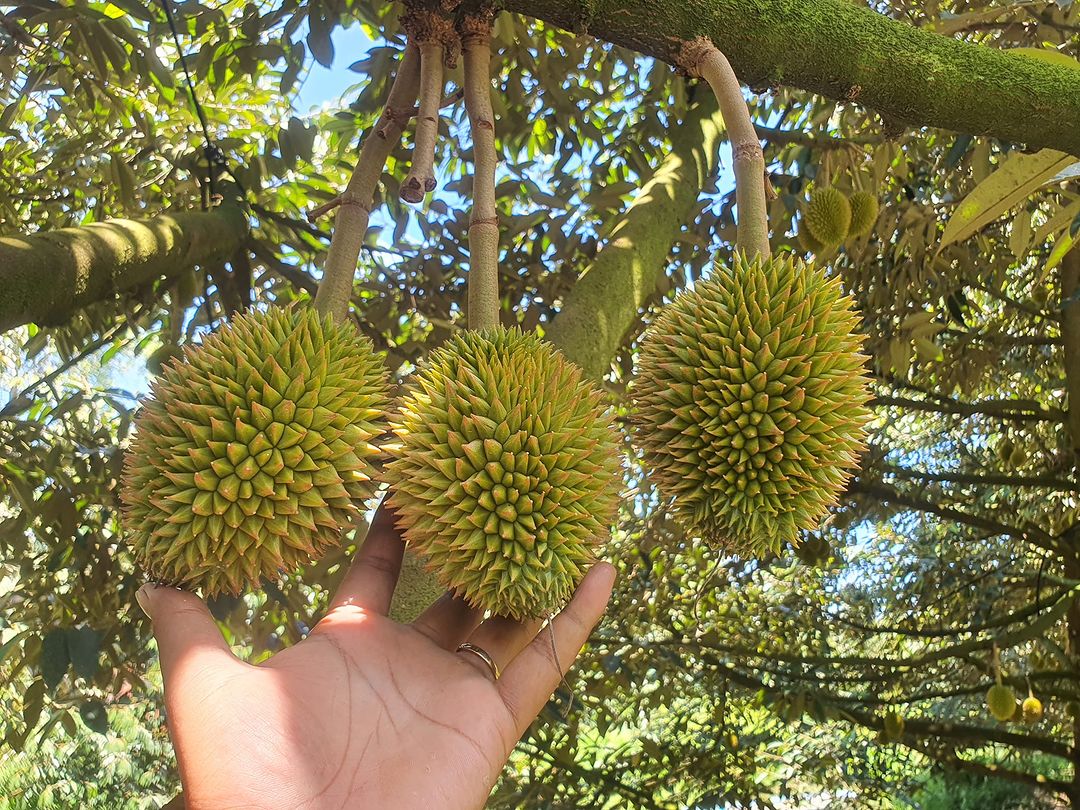From mouth-burning to tongue-firing, these Best Tips to Make Pepper Plants Hotter will elevate your pepper-growing game to the next level.
Take your taste buds on a blazing journey by growing your own super-hot chili peppers. But how can you make sure your pepper plants are producing the spiciest fruit possible? This article will share the Best Tips to Make Pepper Plants Hotter and make your task easy.
Find Is It Safe to Eat Cashew Fruit?
11 Best Tips to Make Pepper Plants Hotter

1. Grow Peppers in Hot Conditions
To grow the hottest pepper plants, it is crucial to plant them in hot environments. Typically, peppers grown in warm-weather regions are hotter than those grown in cooler areas, with warm nights playing a significant role in higher capsaicin levels.
2. Select the Hottest Pepper Variety

If you consider yourself a novice in the world of hot peppers and think that jalapenos are the extent of your knowledge, you’re in for a surprise. The realm of peppers boasts a range of incredible varieties that can pack a serious punch. Some of the hottest peppers, including Carolina Reaper, Trinidad Moruga Scorpion, 7 Pot Douglah, and Ghost Pepper (Bhut Jolokia), can leave you gasping for breath.
TIP: To ensure you get the desired level of heat in your dishes, the second rule is even simpler – opt for seeds of hot pepper varieties when purchasing.
3. Don’t Overwater
To achieve hotter peppers, follow a simple yet effective trick of avoiding overwatering the plants while keeping them adequately hydrated.
Water the plants only when they start to droop a bit instead of keeping them thirsty. Moderate watering is a key factor in the growth and development of pepper plants, particularly when they start to set fruits. Therefore, it is advisable to water them in moderation for optimal results.
Check Different Garlic Growing Stages
4. Nitrogen is Essential
Researchers at the University of California are conducting experiments to grow hotter peppers by manipulating nitrogen and water levels. They have found that higher nitrogen levels can enhance the spiciness and productivity of peppers. On the other hand, lower nitrogen levels can increase the pungency of the peppers, but this can result in decreased yield.
5. Use Epsom Salt
To nourish your pepper plant, add a tablespoon of Epsom salt to a gallon of water and pour it around the base of the plant, following your regular watering routine. It is recommended to repeat this process every 3 to 4 weeks to maintain optimal growth.
6. Add Sulfur
To increase the hotness of your peppers, add sulfur to the soil. One way to achieve this is by placing unlit matches into the hole before planting your pepper plant.
The sulfur content in the match heads is an inexpensive and effective way to add extra heat to your peppers.
NOTE: However, if you are already applying Epsom salt, which also contains sulfur, then this step can be skipped.
7. Say NO to Cross-Pollination

Peppers, being closely related to each other, have the ability to cross-pollinate. This means that if a hot pepper plant is planted near a mildly hot pepper plant, the resulting fruit may not be as hot as desired due to cross-pollination. To avoid this, it is recommended to grow different varieties of peppers at a considerable distance from each other.
Read Tips to Grow Chia Seeds at Home
8. Keep the Peppers in Stress
Keeping the peppers under stress encourages the amount of capsaicin in the pepper fruit. Do this by mistreating the pepper plant by snapping off some leaves, fruits, or stems.
This manner mimics the damage caused by insects and animals, compelling the plant to produce more capsaicin, which is the compound responsible for making peppers spicy.
9. Allow Peppers to Mature

As a pepper age, it becomes hotter and spicier because the amount of capsaicin in the fruit increases over time. Capsaicin is the substance responsible for making peppers spicy and hot. Therefore, it is recommended to wait until green jalapenos turn red before eating them, as this can make your eyes tear up.
10. Harvest Peppers Before Watering or Rainfall
To ensure optimal flavor and heat, it’s recommended to harvest peppers before watering the plant. Despite not showing signs of wilting, the plant will still absorb a significant amount of water during rain or watering, which can dilute the flavor and heat of the hot peppers. Therefore, it’s advisable to pick two ripe hot peppers – one before watering and another a few hours after – to notice the difference.
11. Understand the Node Position
According to this research, Peppers grown on the second node of the plant tend to be spicier than those grown on other parts of the plant. As you move down the plant, the spiciness decreases in a linear form.



